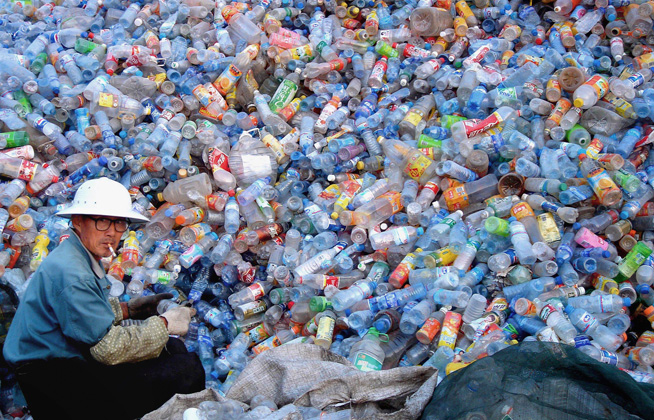 According to the EPA website, in 2010 there was over 31 million tons of plastic waste. That is a lot of plastic waste, but they also state that only 8 percent of that plastic was recycled. Those numbers are frightening when you realize that plastic does not just disappear. In fact the bacteria that helps other items decompose does not feast on plastic it prefers other tastes better. It has been discovered that some bacteria can break down the plastics, but the catch is that the bacteria can, not will. So what does that mean to you? Well it means it is time to be more aware of what you are throwing away and what needs to be recycled.
According to the EPA website, in 2010 there was over 31 million tons of plastic waste. That is a lot of plastic waste, but they also state that only 8 percent of that plastic was recycled. Those numbers are frightening when you realize that plastic does not just disappear. In fact the bacteria that helps other items decompose does not feast on plastic it prefers other tastes better. It has been discovered that some bacteria can break down the plastics, but the catch is that the bacteria can, not will. So what does that mean to you? Well it means it is time to be more aware of what you are throwing away and what needs to be recycled.
There are two different types of plastics, thermosets and thermoplastics. The difference between these two are very obvious. Thermosets are hard plastics which cannot be melted down again. They are hardened, think of the plastic used to make parts of your car. Thermoplastics are what the flimsy water bottles are made of, the ones you can easily crush with one hand. When heated thermplastics can be remolded and therefore be remade into new milk jugs. Mostly, the largest difference is that thermoset plastics cannot be recycled and thermoplastics are easily recyclable.
Now you might believe that recycling is a waste of time especially since there is proof that plastic can degrade in water in about a year. Studies show that the light from the sun over time helps degrade the plastic. Most landfills are far from water and are covered over by dirt, so those plastics will never degrade. So why not throw all the plastic trash in water? Well the studies also found that the plastic breaks down into harmful toxins which will wash up onto shore and come in contact with humans, not to mention the animals and fish in the sea. That is just one of the reasons why you should be concerned with recycling plastic.
Ready to start recycling? Well before you start pulling out plastic from your trash bin, here is a fact you need to know. Many people see on their plastic products the symbol used for recycling. Those three arrows can be misleading. Just because a plastic container is bearing that symbol, does not mean that it is recyclable. It is the letters inside those arrows that provides you with the information of how much resin is in that particular type of plastic. The recycling sign does not mean that plastic is recyclable. So ask before you try to recycle a non-recyclable plastic.
Try and think outside the box when you are ready to commit to recycling. It is obvious that you should recycle your plastic liquid containers, but what else are you over looking? Instead of throwing away the cling wrap that covered dinner in the fridge, put that into be recycled. Don't throw away your plastic sandwich bags, but recycle them. Think of the plastic coverings on new DVD's, toilet papers, and the plastic lids to containers that are not made of plastic. These are just a few of types of plastic that you might overlook and ordinarily throw away without a thought.
Recycling plastic is important. It keeps the environment healthy, reuses resources, and keeps future generations from having to live with our mistakes. You can change the course of the future of our planet through your efforts to recycle. Pick up that jug floating in the ocean and put it in a recycling bin. Catch that plastic shopping bag blowing in the wind. Remember that recycling plastics makes a difference to the whole planet.
